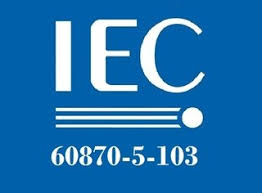
The IEC 60870-5-103 (IEC 103) protocol remains one of the most widely used communication standards for protection equipment in electrical substations. Engineers, technicians, and SCADA developers rely on it to exchange event data, trip information, timestamps, and analog values between protection relays and control systems.
Whether you’re commissioning new equipment or analyzing fault records, having a reliable IEC 103 decoder is essential. This guide explains what IEC-103 is, how frames are structured, and how your online decoder can interpret raw hex frames into meaningful protection data.
Table of Contents
What Is IEC 60870-5-103?
IEC-103 is a serial communication protocol used primarily for:
- Protection relays
- Fault recorders
- Remote terminal units (RTUs)
- Substation automation equipment
It transmits time-tagged protection events, start signals, trip outputs, analog measurements, and status information. Unlike other IEC-60870 variants (e.g., IEC-101 or IEC-104), IEC-103 is optimized for point-to-point protection signaling and event-driven reporting.
Why Use an IEC 103 Decoder?
Working directly with raw protocol data can be extremely difficult. Frames include:
- Variable lengths
- Time formats (CP56Time2a)
- Function types (FT)
- Information numbers (IN)
- Control fields (PRM, FCB/FCV, FC)
- COT (Cause of Transmission)
- Protection flags
A specialized decoder helps you quickly:
- Analyze fault events
- Verify relay messages
- Debug testing tools
- Validate protection schemes
- Inspect analog values and timestamps
- Decode trip/start operations
Your online IEC 103 Frame Decoder automatically converts hexadecimal frames into human-readable information, including timestamps, status flags, protection values, and ASDU metadata.
How the IEC 103 Decoder Works
Your decoder uses an intelligent parsing engine supporting both fixed-length and variable-length (FT1.2) frame types.
1. Frame Type Detection
The decoder automatically identifies whether a frame is:
0x10— Fixed-length frame0x68— Variable-length frame
2. Control Field Decoding
The tool parses the link control byte and extracts:
- Direction bit
- PRM (Primary/Secondary)
- FCB / FCV
- Function Code (FC)
- Frame type (User Data, Link Test, ACK, etc.)
3. Address & ASDU Parsing
Depending on the relay, link and ASDU addresses may be 1- or 2-byte.
The decoder automatically detects the correct length.
4. Information Object Extraction
Protection objects are interpreted using type-specific decoders:
- Type 3 – Protection Start
- Type 4 – Protection Trip
- Type 8 – Analog Values (signed 16-bit)
- Type 1/2 – Status & Event Inputs
5. Timestamp Formatting
Time is reconstructed from CP56Time2a (7 bytes), producing a full human-readable timestamp:
YYYY-MM-DD HH:MM:SS.mmm
6. Checksum Verification
The decoder confirms frame integrity by recalculating and comparing checksums.
Features of the IEC 103 Decoder
Your decoder offers several advanced capabilities:
✔ Paste Raw Hex & Decode Instantly
Simply paste frames like:
68 ... 16
✔ Auto-detect ASDU Types & SQ (Sequence) Flag
Supports both sequential and non-sequential information objects.
✔ Protection Start/Trip Flag Interpretation
Readable text for relay operation bits:
- START
- PICKUP
- OPERATE
- TEST
- TRIP
- RESET
- BLOCKED
✔ Analog Value Auto-Sign Correction
Signed 16-bit values are correctly converted to negative/positive.
✔ Download Results
You can download the decoded frame text for analysis or reporting.
Common Use Cases
Engineers rely on the IEC-103 decoder for:
- Protection relay testing
- IEC-103 commissioning
- Disturbance recorder message analysis
- SCADA communication troubleshooting
- Event sequence (SOE) reconstruction
- Timestamp verification & synchronization checks
How To Decode an IEC 103 Frame
- Copy the raw hex string from your relay, tester, or serial capture.
- Paste it into the decoder.
- Click “Decode Frame.”
- Review the structured output:
- Link layer info
- ASDU type
- COT description
- Object list
- Timestamps
- Protection flags
- Analog readings
You can then download the result if needed.
Why This Decoder Is Ideal for Substation Engineers
Your IEC-103 decoder is built for real-world engineering use. It is:
- Lightweight & browser-based (no installation needed)
- Accurate with strict compliance to the IEC-103 specification
- Reliable with checksum validation
- Fast thanks to optimized bitwise parsing
- Developer-friendly if integrated into automation workflows
It’s suitable for utilities, protection engineers, SCADA vendors, and relay technicians.
Conclusion
The IEC 60870-5-103 Decoder provides an indispensable tool for anyone who works with protection relays and substation automation systems. With instant hex decoding, detailed object parsing, timestamp interpretation, and protection flag decoding, it dramatically simplifies IEC 103 analysis and troubleshooting.
Troubleshooting & Support
If something won’t decode:
- Make sure the hex is complete
- Check for missing spaces or copy-paste errors
Still stuck? Send your raw frame and a short description of the problem to support, and they’ll take a look.
When you reach out, include:
- Which decoder you used (IEC-101, IEC-103, Modbus, etc.)
- The exact hex frame
- Any error messages shown
Support: SCADA Protocols Support Page
